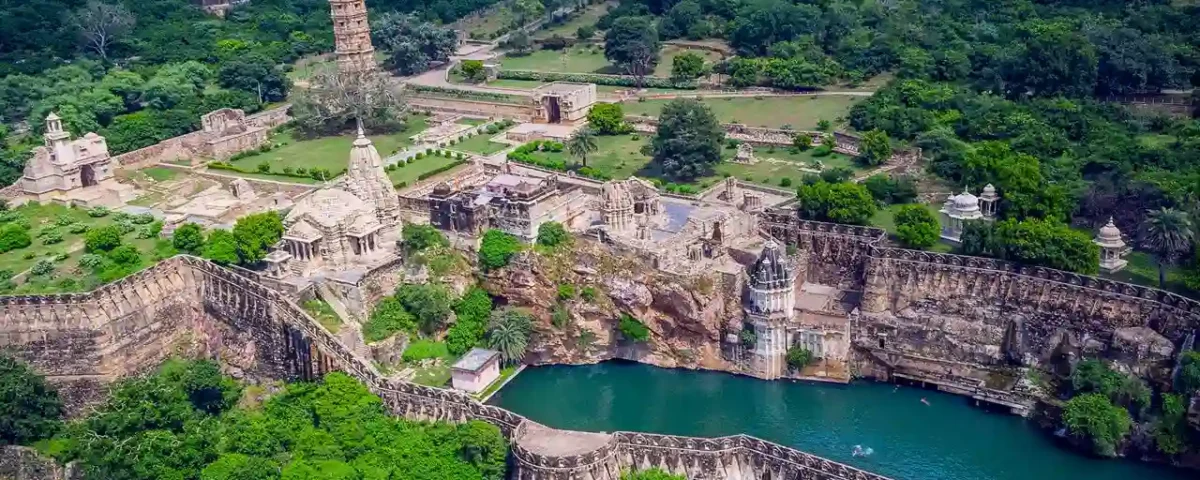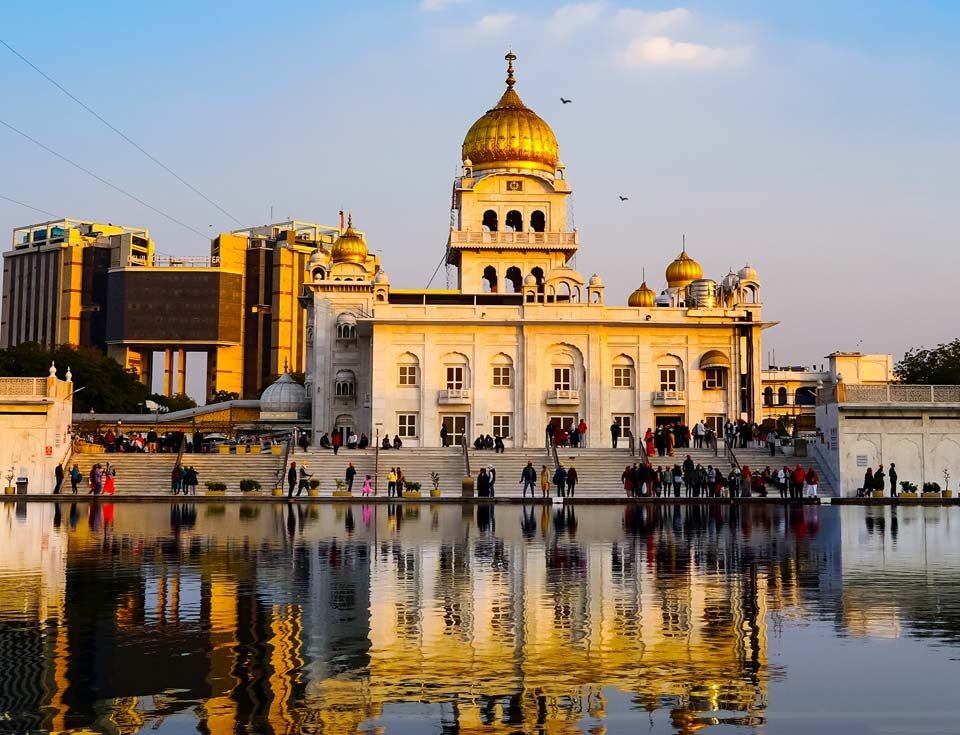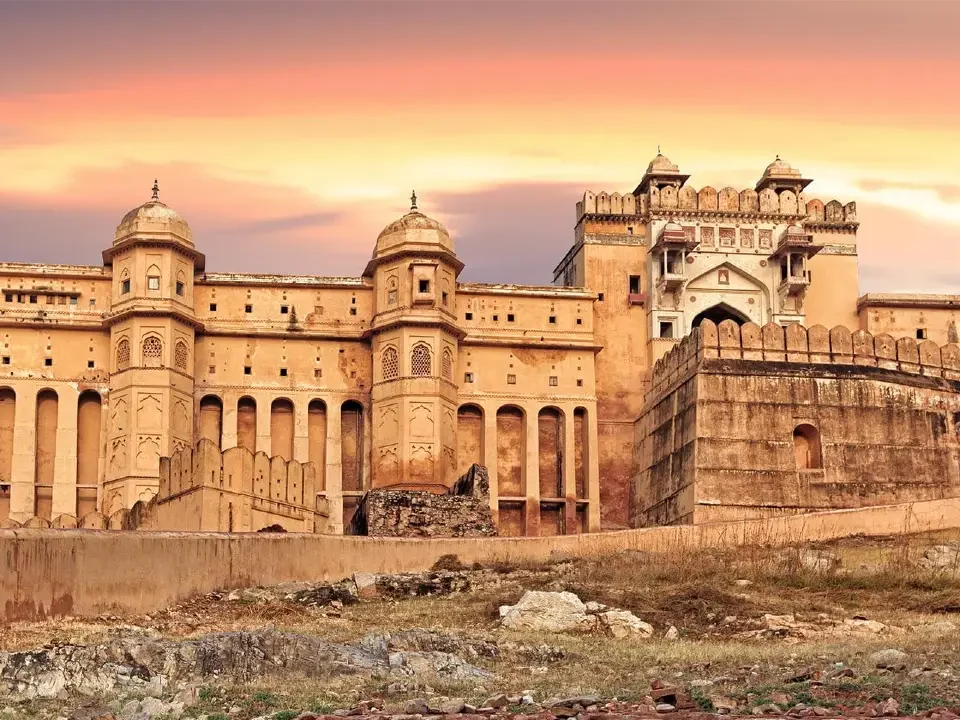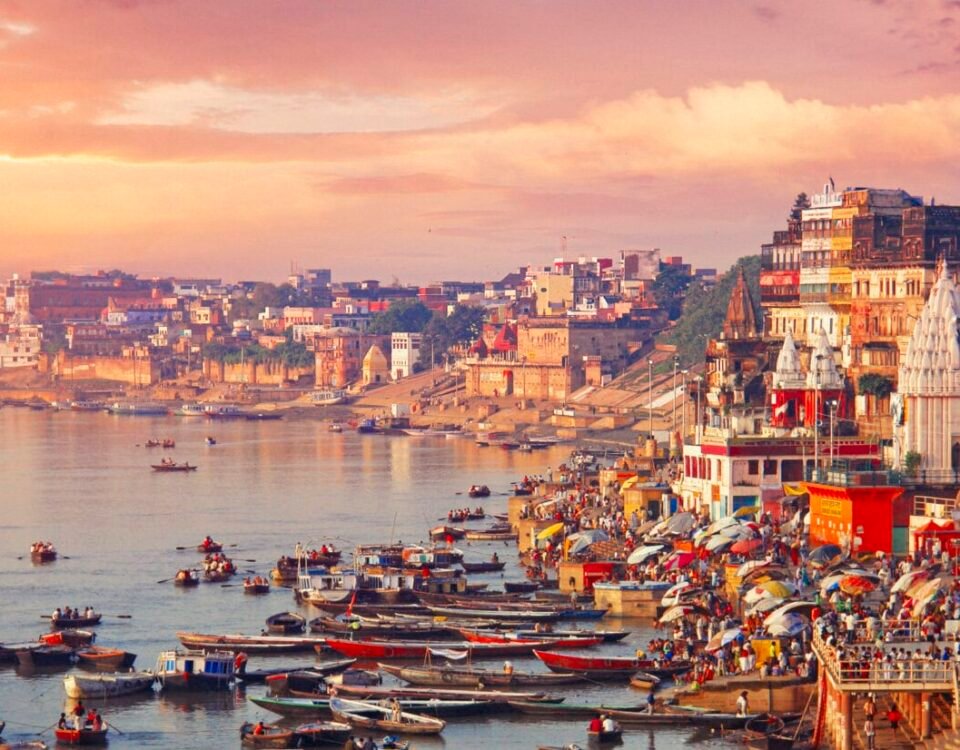Chittorgarh Fort Rajasthan: History, Havelis & the Legacy of Jauhar

Best Places to Visit in India During July: Top Destinations to Travel This Monsoon
May 13, 2025
Famous Mumbai Street Food: A Guide to Bombay’s Best Maharashtrian Flavors
June 16, 2025Introduction to Chittorgarh Fort
Perched atop a 180-meter-high hill and spread across 700 acres, Chittorgarh Fort is one of the largest and most historically significant forts in India. Located in the heart of Rajasthan, this colossal structure narrates tales of Rajput bravery, honor, and sacrifice. Known as the pride of Mewar, the fort has stood as a symbol of resistance and heroism for centuries, having faced multiple sieges by powerful rulers like Alauddin Khilji and Akbar.
When visiting Chittorgarh Fort Chittorgarh Rajasthan, travelers are transported to a bygone era where kings ruled with valor and queens chose death over dishonor. The fort’s towering gates, majestic palaces, intricate temples, and serene reservoirs offer a compelling glimpse into the architectural and cultural brilliance of Rajputana. Recognized as a UNESCO World Heritage Site, Chittorgarh Fort is not just a monument—it’s a living chapter of Indian history that continues to inspire and captivate.
Chittorgarh Fort History – A Glimpse into the Past
The story of Chittorgarh Fort history begins in the 7th century when it was believed to have been founded by the Mauryan ruler Chitrangada Mori. Over the centuries, the fort evolved into a stronghold of the Mewar Kingdom, becoming a symbol of Rajput pride and unwavering courage.
Under the rule of great warriors like Rana Kumbha, Chittorgarh saw a golden era of architecture, culture, and military might. One of the most legendary figures associated with the fort is Rani Padmini, whose story of valor and sacrifice during the siege by Alauddin Khilji in 1303 still resonates deeply in Indian history. The fort later witnessed two more major assaults—by Bahadur Shah of Gujarat in 1535 and Emperor Akbar in 1567—each followed by mass acts of Jauhar, where women chose self-immolation over capture.
Today, Chittaurgarh Fort stands as a solemn reminder of these fierce battles, heroic resistance, and the Rajput code of honor.
The Architecture & Layout of Chittorgarh Fort
The fort of Chittorgarh is a breathtaking example of Rajput military architecture combined with spiritual and royal grandeur. Spanning over 700 acres atop a steep hill, the fort is strategically designed for defense and endurance, offering sweeping views of the surrounding plains.
Access to the fort is through seven massive gateways, known as Pols, each constructed with heavy stone arches and watchtowers to resist enemy advances. Once inside, visitors are greeted by an impressive array of towers, temples, palaces, and step-wells that reflect the architectural brilliance of Mewar’s rulers.
Significant structures within Chittorgarh Fort Rajasthan include the Vijay Stambh (Tower of Victory), Kirti Stambh (Tower of Fame), the majestic Rana Kumbha Palace, and Meera Temple, each bearing intricate carvings and rich histories. Numerous water reservoirs and step-wells ensured a self-sustaining environment during sieges, showcasing the foresight and ingenuity of its builders.
Iconic Places to Visit Inside the Fort
Exploring the fort of Chittorgarh reveals a treasure trove of iconic monuments, each echoing the valor and cultural richness of Rajputana. One of the most visited structures is the Rani Padmini Palace, a picturesque water palace surrounded by a lotus-filled pool. This serene yet strategic structure is closely associated with the legendary queen who chose sacrifice over surrender.
Nearby lies the Rana Kumbha Palace, one of the oldest surviving parts of the fort and believed to be the historic Chittorgarh Johar place. It is here that Rani Padmini and hundreds of women committed Jauhar to preserve their honor during Alauddin Khilji’s siege.
The towering Vijay Stambh (Tower of Victory), built by Rana Kumbha to commemorate his triumph over Mahmud Khilji, stands as a proud symbol of Mewar’s military glory. The Kirti Stambh, dedicated to Jain Tirthankara Adinath, showcases exquisite Jain craftsmanship.
Don’t miss the Meera Temple, dedicated to the saint-poet Meera Bai, and the Gaumukh Reservoir, a sacred water tank that once sustained the fort during times of siege. These landmarks together make Chittorgarh a living monument of sacrifice, spirituality, and strength.
Exploring the Havelis and Living Structures
While most visitors are drawn to the grand towers and palaces, the Chittorgarh Fort Havelis offer a more intimate look into the everyday lives of nobles and courtiers of the Mewar kingdom. These lesser-known structures are scattered across the vast fort complex and represent the elegant residential quarters once occupied by high-ranking Rajput families and ministers.
Characterized by intricately carved stone facades, jharokhas (overhanging enclosed balconies), and internal courtyards, these havelis reflect the distinctive features of Rajput architecture—both functional and ornamental. The use of sandstone, traditional arches, and floral motifs showcases the blend of artistry and defense-focused design that defines the fort’s construction style.
Many of these heritage homes remain in partial ruins, yet they stand as quiet storytellers of Chittorgarh’s past. Exploring these havelis offers visitors a deeper connection to the culture and lifestyle of the people who once lived within the majestic walls of Chittorgarh Fort.
The Story of Jauhar – Pride, Sacrifice & Resistance
Few stories in Indian history evoke as much emotion and reverence as the Jauhar traditions of Chittaurgarh Fort. This solemn act of collective self-immolation by Rajput women was not just a ritual, but a powerful statement of resistance against dishonor and subjugation. Chittorgarh witnessed three major Jauhars, each during a time of grave siege and impending defeat.
The first and most legendary Jauhar was led by Rani Padmini during Alauddin Khilji’s attack in 1303. Refusing to be taken captive, she and thousands of women chose fire over dishonor. The second Jauhar occurred in 1535 during the invasion by Bahadur Shah of Gujarat, and the third, led by Rani Karnavati, happened during Akbar’s siege in 1567.
The Chittorgarh Johar place, believed to be located within the ruins of Rana Kumbha Palace, still echoes with the bravery and pain of these events. Here lies Johar Kund, where these acts of sacrifice were carried out. Today, the site stands not just as a historical marker but as a tribute to Rajput valor and the unbreakable spirit of Mewar’s women.
Timings, Entry Fee & How to Reach Chittorgarh Fort
Planning your visit to Chittorgarh Fort requires a bit of preparation to make the most of your experience. The fort is open daily from 9:00 AM to 5:00 PM, allowing visitors ample time to explore its vast expanse and historic marvels.
As of the latest update, the entry fee is ₹40 for Indian nationals and ₹600 for foreign tourists. Additional charges may apply for guide services or light and sound shows, which are worth attending if you’re interested in learning about the fort’s rich past in an engaging format.
To reach the fort, the most convenient option is to travel by train to Chittorgarh Junction, which is well-connected to major cities like Udaipur, Jaipur, and Delhi. From the station, local transport or taxis can take you up to the fort.
The best time to visit is between October and March, when the weather is pleasant, making it easier to walk around and explore the open-air sites without the scorching heat of summer.
Tips for Visitors: What to Know Before You Go
A visit to Chittorgarh Fort can be both awe-inspiring and physically demanding due to its massive size and hilly terrain. Here are a few essential tips to help you make the most of your experience:
- Wear comfortable shoes: The fort spans over 700 acres and includes uneven stone pathways, so sturdy footwear is a must.
- Carry water and sun protection: Rajasthan’s sun can be intense, even in winter. Keep a water bottle, sunglasses, and sunscreen handy.
- Hire a local guide or use an audio tour: To truly understand the fort’s layered history, hiring a knowledgeable guide or using an official audio tour adds context to what you’re seeing.
- Time your visit wisely: Mornings offer soft lighting ideal for photography, while the evenings are perfect for catching the golden hues of sunset from the ramparts or near Gaumukh Reservoir.
Being well-prepared will enhance your journey through this magnificent symbol of Rajputana pride and sacrifice.
Conclusion – Why Chittorgarh Fort is More Than Just a Monument
Chittorgarh Fort is not merely an ancient structure of stone and mortar—it is a living testament to the courage, sacrifice, and unshakable spirit of the Rajputana legacy. From the haunting echoes of Jauhar Kund to the soaring heights of Vijay Stambh, every corner of this fort tells a story steeped in valor and deep cultural pride.
More than a historical site, it is a sacred ground where generations chose honor over life, and where art, devotion, and resilience flourished amidst constant threats. Whether you’re planning a Best Rajasthan Travel Itinerary or visiting iconic monuments like the Hawa Mahal Jaipur India, Chittorgarh deserves a place on your route.
For those exploring the Best Places to Visit in India in July or seeking spiritual sites like the 5 Famous Temples in North India, this fort offers a blend of heritage and soul-stirring history. Plan your visit soon and experience a legacy that lives on in every stone of Chittorgarh.
What is Chittorgarh Fort famous for?
Chittorgarh Fort is famous for its unmatched legacy of Rajput valor, sacrifice, and honor. As one of the largest forts in India, it symbolizes the indomitable spirit of the Mewar dynasty. The fort is particularly renowned for the heroic acts of Rani Padmini and Rani Karnavati, who led mass Jauhars (self-immolation) to avoid capture by enemy forces. Architectural marvels like the Vijay Stambh, Rani Padmini Palace, and Rana Kumbha Palace attract historians and travelers alike. Its tales of resistance against repeated invasions have made it a UNESCO World Heritage Site and a cultural treasure of Rajasthan.
Did Maharana Pratap live in Chittorgarh?
Yes, Maharana Pratap was born in the Mewar dynasty and spent part of his early life in Chittorgarh Fort, which was then the capital of Mewar. Although his reign began after the fort fell to the Mughals under Emperor Akbar in 1567, Chittorgarh played a significant role in shaping his warrior spirit. After losing the fort, Maharana Pratap refused to accept Mughal dominance and continued to fight for Mewar’s independence, becoming a legendary figure in Rajput history. His early exposure to the fort’s heroic stories and sacrifices inspired his lifelong resistance against foreign rule.
What happened in Chittorgarh Fort?
Chittorgarh Fort witnessed some of the most dramatic and tragic episodes in Indian history. It was the site of three major sieges, each resulting in Jauhar—mass self-immolation by women to avoid capture and dishonor. The most notable event occurred in 1303 when Alauddin Khilji attacked the fort to capture Rani Padmini. Similar sieges by Bahadur Shah in 1535 and Emperor Akbar in 1567 also led to large-scale destruction and immense loss of life. Despite these tragedies, the fort remained a beacon of resistance and Rajput pride, preserving its legacy through tales of heroism and sacrifice.
How many times was Chittorgarh Fort attacked?
Chittorgarh Fort was attacked three major times in its recorded history, each leading to significant events that shaped its legacy. The first and most famous attack was in 1303 by Alauddin Khilji, who desired Rani Padmini. The second assault came in 1535 by Bahadur Shah of Gujarat, and the third occurred in 1567 under Emperor Akbar. Each siege was met with fierce resistance by the Rajput defenders and ended in acts of Jauhar by the fort’s women. These attacks, though devastating, solidified the fort’s reputation as a symbol of indomitable courage and unwavering honor.




